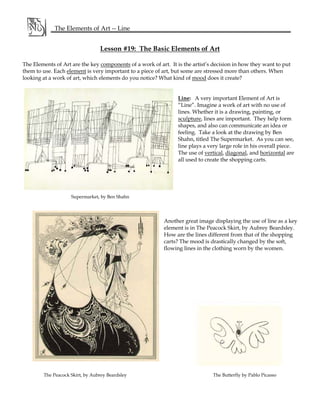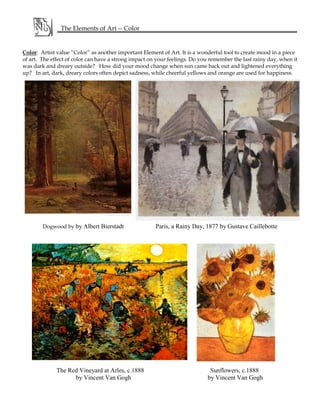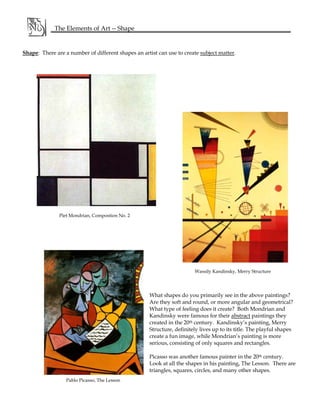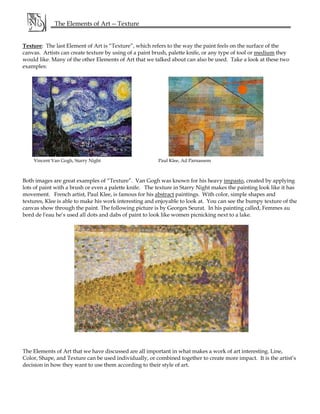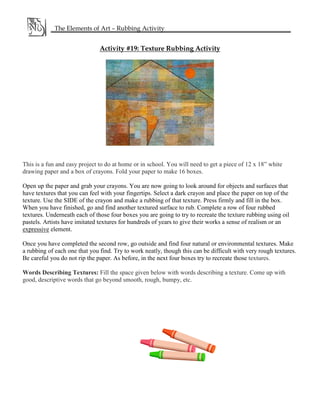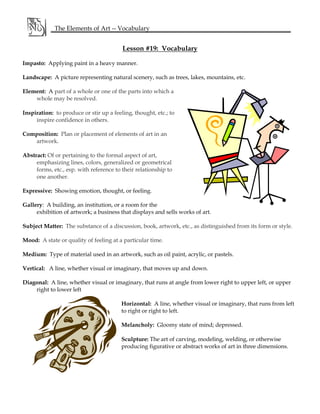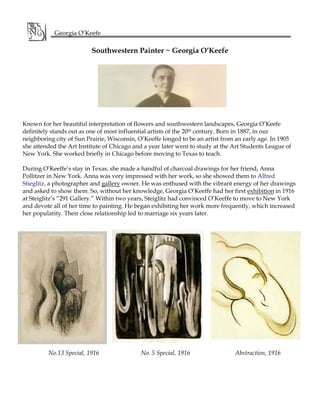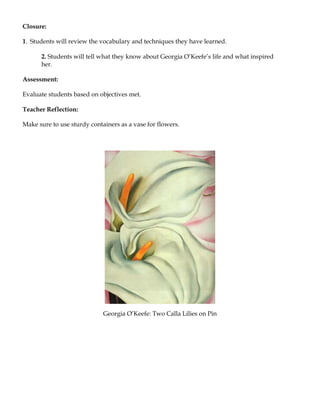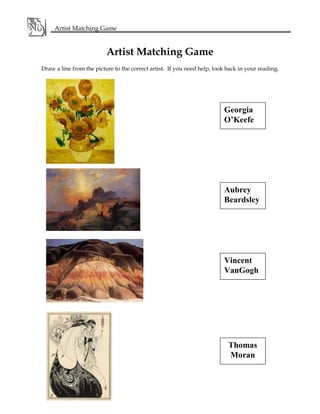The document discusses the basic elements of art including line, color, shape, and texture. It provides examples of how different artists have used these elements in their works. Line is demonstrated through images by Ben Shahn and Aubrey Beardsley. Color is shown through paintings by Vincent Van Gogh and others depicting mood. Shape is seen in abstract paintings by Kandinsky, Picasso, and Mondrian. Texture is displayed in works by Van Gogh, Klee, and Seurat using paint application and other mediums. The elements are important individually or together in art.
